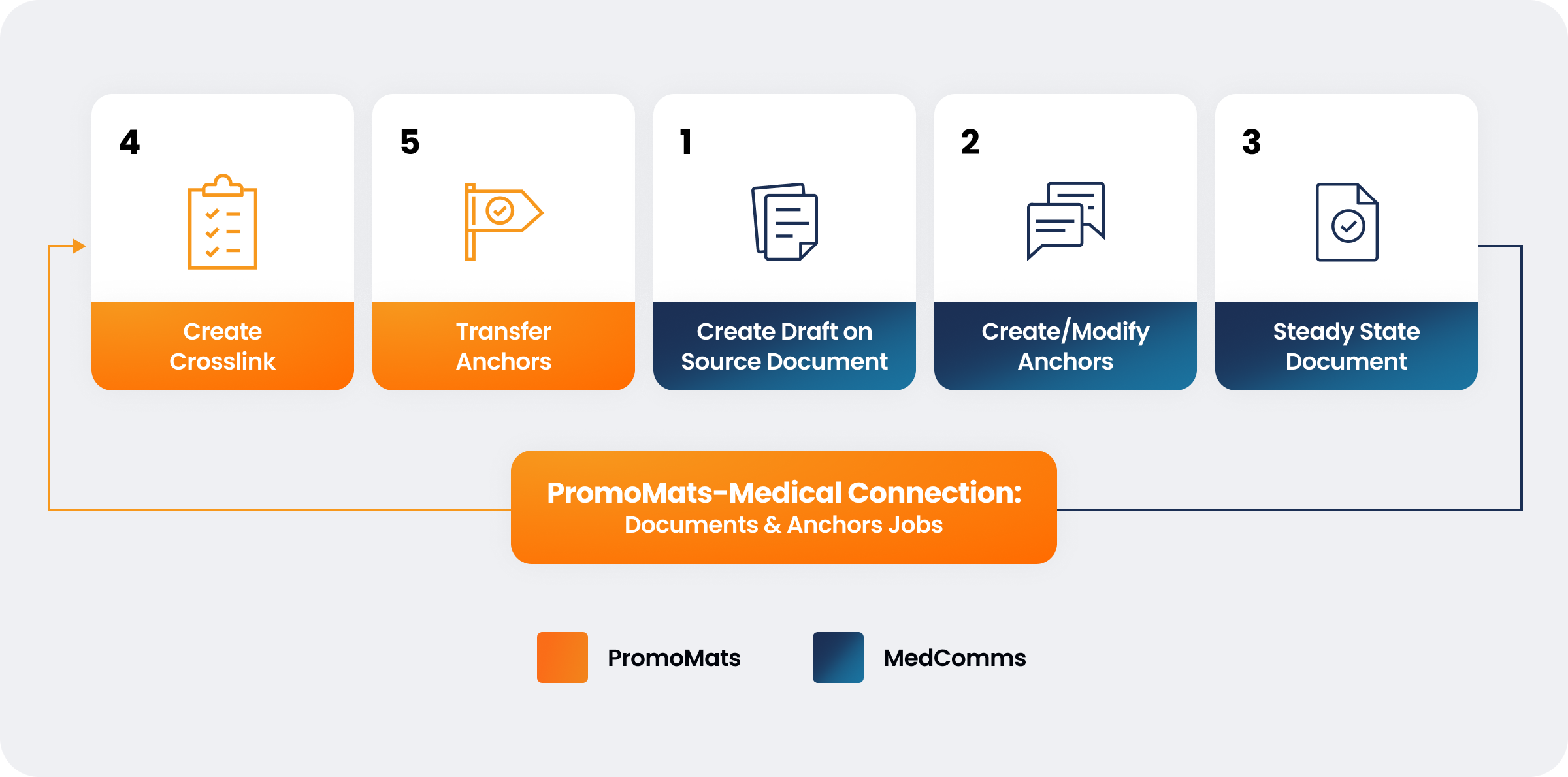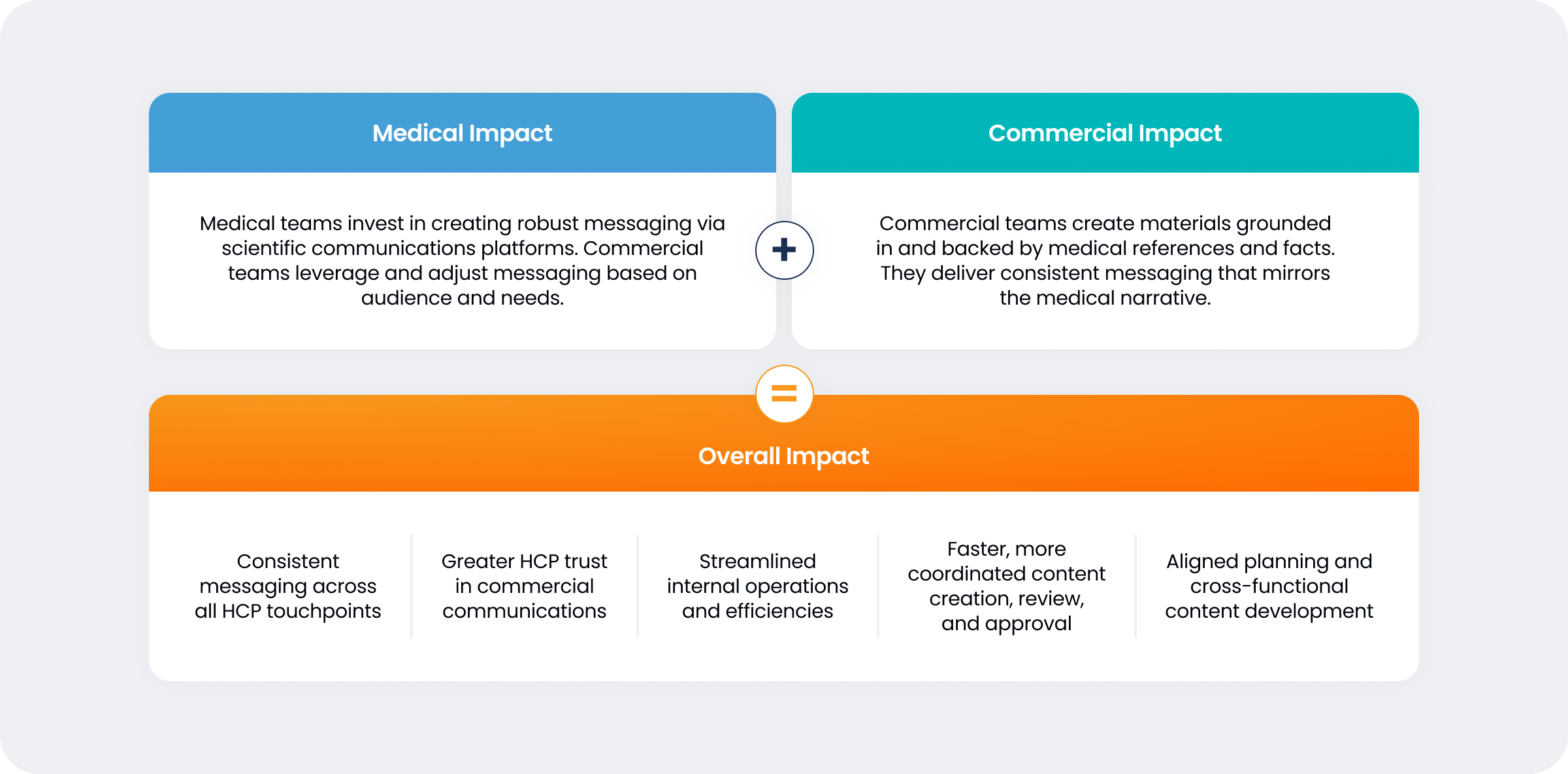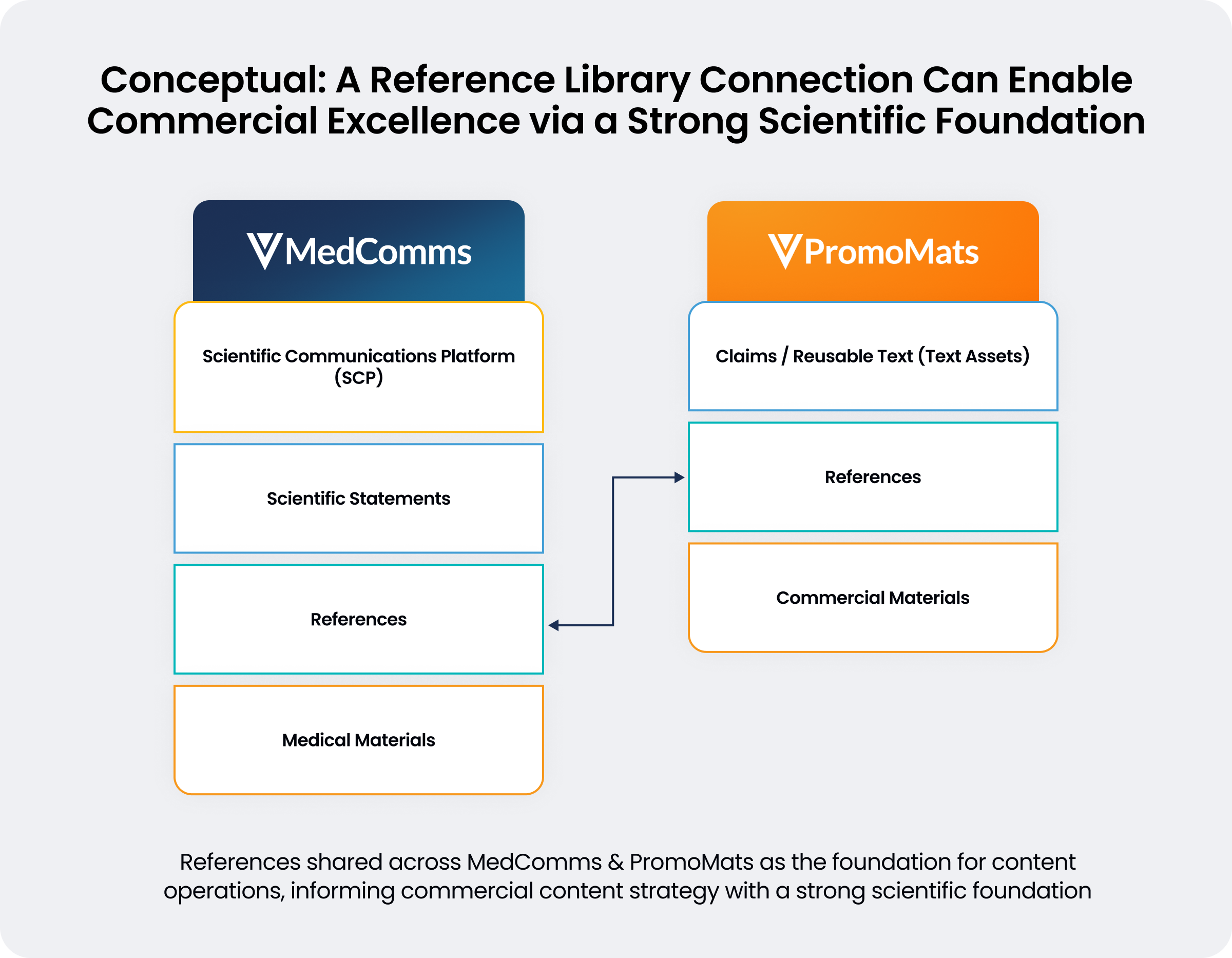Blog
Why Connected Systems Strengthen Medical-Commercial Alignment
Dec 10, 2025 | Jai Sadhwani
Dec 10, 2025 | Jai Sadhwani
Healthcare professionals (HCPs) are more discerning than ever, expecting biopharmas to deliver deep scientific information in the right channel across every touchpoint. Meeting their expectations requires medical and commercial teams to operate as true partners. Yet most teams work in silos, separated by disconnected systems and legacy operating models.
Biopharma leaders agree: when surveyed, executives from top 20 biopharma organizations report that the HCP experience across medical and commercial is disconnected, inconsistent, and not timely. Amid shorter commercialization windows and complex science, now is the time to close the divide.
Operating models, not compliance, reinforce silos
It’s a common misconception that compliance alone reinforces the silos between medical and commercial functions. However, recent Veeva Pulse Field Trends data reveals a deeper challenge. Some 71% of executives surveyed from top 20 biopharma organizations say that operating models — not compliance — are the main barrier to effective medical-commercial collaboration.
In the standard biopharma operating model, commercial teams craft messaging and materials rooted in customer insights and market priorities. Independently, medical teams generate scientific narratives, publications, and evidence. The two teams work toward related but disconnected goals using different processes and systems. As a result, companies report:
- Duplication of effort: Disconnected content creation and review processes lead to redundant materials, inefficiencies, and wasted resources.
- Limited access to scientific evidence: Customer-facing teams lack ready access to the most current and relevant medical information to support their messaging.
- Gaps in scientific rigor: Commercial content falls short of the scientific standards that healthcare professionals expect.
- Under-leveraged medical messaging: Medical teams invest heavily in high-quality scientific messaging, but it’s often not used as the foundation of commercial narratives.
Put medical-commercial collaboration into practice
Establishing the culture and operations that enable medical-commercial alignment requires change management and executive sponsorship. A transformation of this scale takes time and effort — but organizations can gain early momentum through practical, focused initiatives.
As software is increasingly built around cross-functional best practices, technology is leading the way in actively encouraging the most efficient and productive operating model for medical and commercial teams. Put medical-commercial collaboration into practice by launching a shared project, supported by shared tools and systems. Connected systems inherently encourage teams to work together. Collaboration becomes part of their daily workflows and lays the groundwork for shared KPIs and connected processes.
Configuring the PromoMats-Medical Connection is one such project. The configuration can create a single source of truth for references and streamlines document management, enhancing collaboration. Medical and commercial teams share and use the same scientific narrative and assets to support commercial messages and claims.
Through this joint effort, teams experience the benefits of connection in practice. Together they set and track clear and connected medical-commercial goals. The end result: consistent messaging and controlled version management — all within a compliant, flexible framework. It’s a powerful first step toward transformation.
How does the PromoMats-Medical Connection work?

The benefits of working from connected systems
When commercial and medical teams operate from connected systems, the benefits are compelling:
- Consistency: Medical and commercial teams access a single source of truth for content, ensuring that every engagement communicates the same accurate, evidence-backed message. Misalignment between medical insights and commercial messaging is minimized. HCPs receive a clear, credible, and unified narrative.
- Faster turnaround: Connected systems streamline content creation, review, and approval. Automated reference linking and integrated workflows mean scientific messages are always up to date, reducing delays. Teams respond faster to new data or emerging evidence.
- Better alignment: Medical and commercial teams gain visibility with connected systems. Commercial teams leverage scientific communications while medical teams understand how their content is applied in the field. This builds a true feedback loop, aligning scientific messaging with market engagement.
The impact of medical-commercial alignment
Medical and commercial teams that effectively work together are more successful in delivering the scientific information HCPs need to treat patients. When equipped with connected tools and aligned scientific messaging that carries into commercial initiatives, they can support HCP decision-making and accelerate treatment adoption.
The impactful combination of connecting deep, scientific dialogue with commercial resources


Ensure your medical and commercial teams align, with support from Veeva Business Consulting.